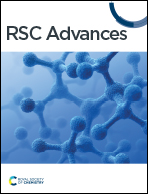Nano-optical method for transforming a single yeast cell using exogenous genes
Abstract
We report a highly efficient nano-optical method for transforming a single yeast cell using exogenous genes. It used laser tweezers or micromanipulators to immobilize the cell immersed in a DNA solution and created a transient nano-sized hole on its cell wall concurrently with laser scissors to deliver nano moles of DNA into the cell. With this method, one can directly transfer the naked DNA of exogenous genes into yeast cells for transformation. We successfully transformed S. cerevisiae yeasts respectively with GFP (Green Fluorescent Protein) plasmid and the nucleic acid extraction of a bacteria GF1 from the gut of Coptotermes formosanus termites. The experimental results demonstrated that the recombinants had high survival rate and transformation efficiency (28%). The recombinant GFP–yeast system showed green fluorescence for generations. GF1 DNA sequences were incorporated into the yeast genome as a heritable component with stable expression for multi-generations so that the recombinant GF1–yeast had a strong capability of digesting biomass as GF1. Our method would apply to different cells with cell walls for various gene transformations.



 Please wait while we load your content...
Please wait while we load your content...